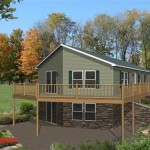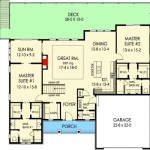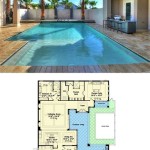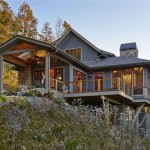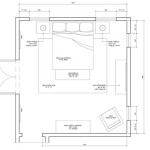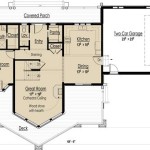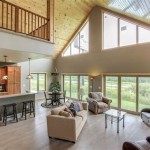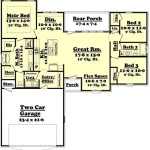Small Log Cabin Designs Plans
The allure of a log cabin evokes images of rustic charm, cozy fires, and a peaceful escape. For those dreaming of owning such a retreat, small log cabin designs offer an affordable and manageable path to realizing that dream. Careful planning is crucial to maximizing space and functionality in a smaller footprint. This article will explore various aspects of small log cabin design plans, focusing on key considerations for prospective builders.
Foundation and Footprint
The foundation is the bedrock of any structure, and log cabins are no exception. A solid foundation ensures stability and longevity. For smaller cabins, pier and beam foundations are often a cost-effective choice, especially in areas with uneven terrain. This type of foundation raises the cabin off the ground, improving ventilation and minimizing moisture issues. Concrete slab foundations are another option, offering a level surface and potentially simplifying the interior finishing process. Choosing the right foundation depends on factors such as budget, soil conditions, and local building codes.
The footprint, or the shape and size of the cabin's base, is equally important. Rectangular footprints are common due to their efficient use of space and relative ease of construction. Square footprints offer a symmetrical aesthetic and can be well-suited for smaller cabins. Consider the desired layout and flow of the cabin when determining the footprint. Software programs and online tools can assist in visualizing different footprint options and their impact on the interior space.
Layout and Space Optimization
Efficient space planning is paramount in a small log cabin. An open-concept design, where the living, dining, and kitchen areas flow together, can create a sense of spaciousness. Loft spaces are a popular way to add sleeping quarters or storage without expanding the footprint. Built-in furniture, such as window seats with storage underneath, can maximize functionality while minimizing clutter. Multi-purpose rooms, where a guest room can double as an office or a craft space, offer flexibility and adaptability.
Prioritizing essential features is key. Focus on incorporating necessary elements, such as a bathroom, kitchen, and sleeping area, before considering less critical additions. Careful consideration of traffic flow and furniture placement can optimize the use of every square foot. Utilizing vertical space with shelving and lofts can also significantly increase storage capacity.
Material Selection and Construction
Log cabins are traditionally constructed using logs, but the specific type of log and construction method can vary. Full logs, offering a rustic and authentic look, require skilled craftsmanship and can be more expensive. Half-logs, essentially logs cut in half lengthwise, are a more affordable alternative and can be easier to work with. Log profiles, such as D-logs or Swedish cope logs, influence the appearance and tightness of the log joints.
Proper insulation is vital for energy efficiency and comfort in all climates. Consider using high-quality insulation materials in walls, floors, and the roof to minimize heat loss in winter and heat gain in summer. Double-paned windows and well-sealed doors further contribute to energy efficiency. Choosing sustainable and locally sourced materials, where possible, can reduce the environmental impact of the cabin's construction.
The roof design plays a significant role in the cabin's overall aesthetic and structural integrity. Gable roofs, characterized by their triangular shape, are common and offer a classic cabin look. Shed roofs, with a single sloping surface, are simpler to construct and can be suitable for smaller cabins. Metal roofing is a durable and low-maintenance option, while asphalt shingles offer a more traditional appearance. Consulting with a structural engineer can ensure the roof design is appropriate for the cabin's size and location.
Planning for Utilities and Amenities
Planning for utilities and amenities is a crucial step in the design process. Consider the availability and cost of connecting to electricity, water, and sewer systems. Off-grid options, such as solar panels, rainwater harvesting, and septic systems, offer independence but require careful planning and maintenance. Proper ventilation is essential for maintaining air quality and preventing moisture buildup. Incorporate adequate ventilation strategies into the design to ensure a healthy and comfortable indoor environment.
Accessibility features, if needed, should be integrated into the design from the outset. Consider wider doorways, ramps, and accessible bathroom fixtures to accommodate individuals with mobility challenges. Outdoor spaces, such as decks or patios, extend the living area and provide opportunities for enjoying the surrounding environment. Planning for these features during the design phase ensures a seamless integration with the overall cabin design.

6 Really Cozy Little Log Cabin Floor Plans

Tiny Log Cabin Kits Easy Diy Project

Small Log Homes Kits Southland

Tiny Log Cabin Kits Easy Diy Project

11 Free Small Cabin Plans With Printable Log Connection

Tiny Houses Living Large Southland Log Homes

13 Best Small Cabin Plans With Cost To Build

Bluebird 10x12 Log Cabin Meadowlark Homes

Lodge Log And Timber Floor Plans For Homes Lodges Cabins Bear Lake

Small Cabin Home Plan With Open Living Floor

